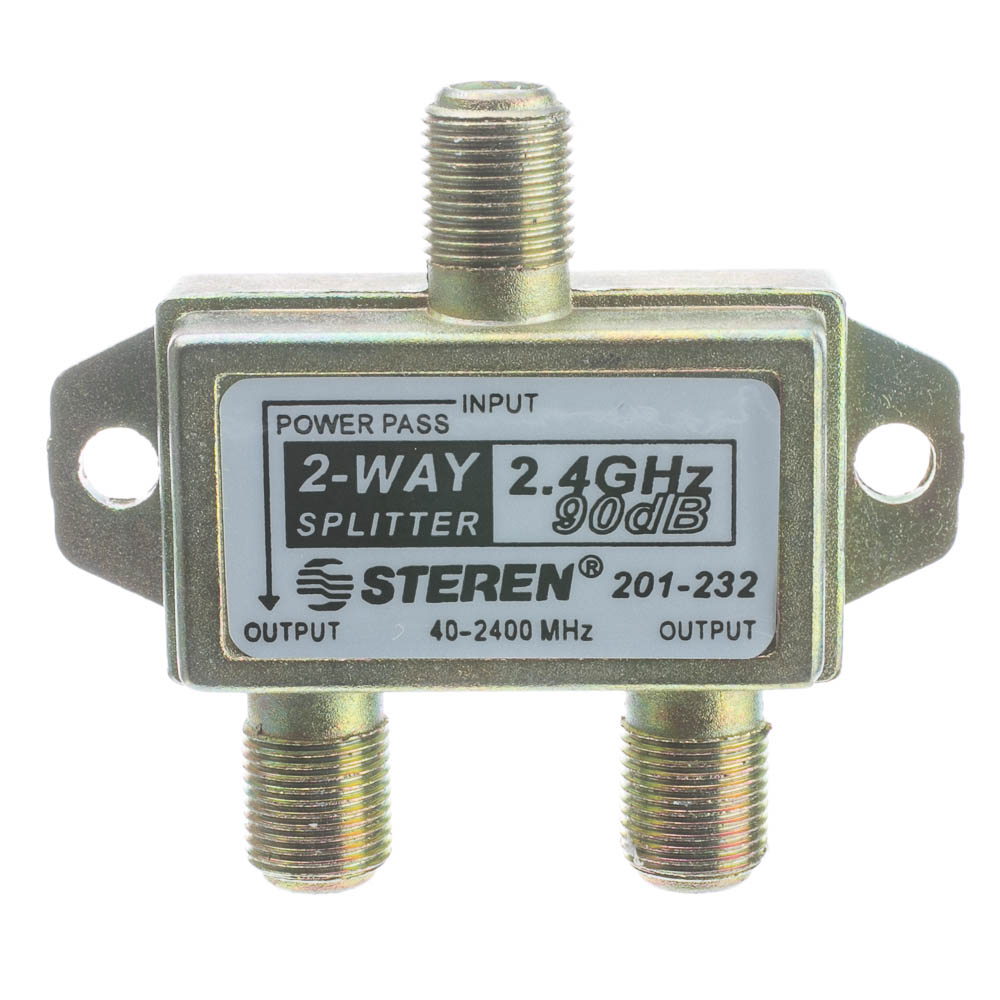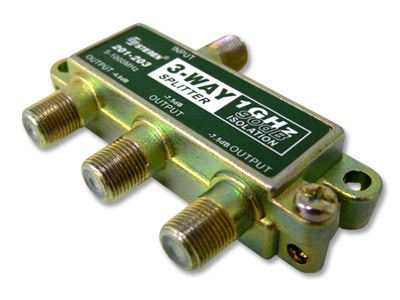

Splitters are designed to distribute the signal evenly between each of its connection ports, regardless of how many lines are actually being utilized at any given time.Ĭhoose only the amount of output lines you will actually be using in order to avoid weakening your cable signal unnecessarily. When choosing a splitter for your home entertainment needs, select the number of output lines you will need for your splitter carefully. This will allow you to maximize the efficiency of your signal and will usually be enough to reduce any cable/internet connection problems significantly. The solution to this problem is to choose a high output, one GHz splitter that is designed to pass a large amount of data. Although this is a fundamentally sound idea, the problem with this method is that cable internet requires a strong signal in order to function correctly, and because the signal is being split, there may not be enough power to sustain a good connection, causing poor signal quality or even loss of service.
Coaxial audio splitter tv#
In order to save cash, many households decide to split their coax cable line to provide both TV and Internet service.

Connecting Cable TV to Cable Internet Modem This problem can be rectified by purchasing an amplified coax splitter which enhances the cable signal while allowing you to distribute to more outputs without risk of failure. If you have more than three TVs hooked up to one cable line and you notice that the signal has been significantly reduced and/or the sound/picture quality available to each TV has been compromised, you may have over-stretched the signal. Most people fail to realize that the cable signal that runs through their home is not an unlimited source and therefore cannot be split into too many different lines as each split weakens the signal and increases chances of connection failure. The number of output lines can be customized to your preference, depending on what the splitter will be used for. This can be an issue in most households where there is more than one device that needs a signal.Ĭoaxial splitters are small connector devices designed with an input line to provide a connection to your existing cable and multiple output lines that tap into your cable's signal and split it into several lines to connect to multiple devices. I might just make that part of the A/B or A/B/C comparison.Coaxial cable lines are produced to provide only one signal to power a singular audiovisual device. Maybe my misguided opinion but now that you mention it I think I have a optical splitter somewhere around here. I believe this would also apply to an optical splitter similar to the one you suggest.

The Vault2i ALSO has an optical OUT but like many others I believe the sound quality is not up to the coaxial. That was my thought going the y-splitter rout. It may not work, but it won't hurt anything either (just don't use cables over 15 meters, and even that won't hurt but you may not get a signal).Ĭan you use optical for the test? There are S/PDIF optical splitters for a few $ (Monoprice has one). So, you might get away with a Y-splitter that you suggested, but I would get a cheapo - the reflection issue will overwhelm any advantage of fancy copper for your tests. At the frequencies of SPDIF (about 3 MHz), the wavelength in cable is roughly 70 meters - the reflected phase will be nearly the same as the outgoing phase for 1 meter cable back at the source (meaning no problem). If you don't match impedances you will have a reflection problem (like light reflecting air to water, but less dramatic). A cable type splitter is best (but the one above won't pass SPDIF signals - the low end starts at 5 MHz).


 0 kommentar(er)
0 kommentar(er)
